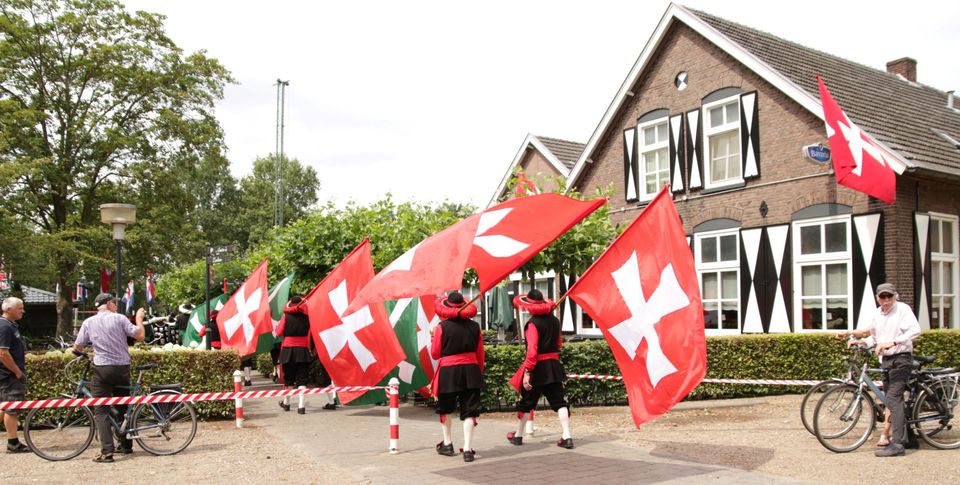Koksehoeve
Gemert-Erp border. The Koksehoeve in the 1960s. Gemert-Erp border municipal archives collection. The Koksehoeve now.
It was common for inns to stand on the through roads in the empty moors and swamps of the Peel on the municipal borders. Gemert…
Gemert-Erp border. The Koksehoeve in the 1960s. Gemert-Erp border municipal archives collection. The Koksehoeve now.
It was common for inns to stand on the through roads in the empty moors and swamps of the Peel on the municipal borders. Gemert too had several, such as the Roskam, the Drie Ossen, and the Pelgrimsrust. This Koksehoeve, which made an ideal inn because of its location, is the only one still in function, but there was a bit more to the Koksehoeve than the standard inn. The earliest reference to a house on this spot is in the Middle Ages, in 1483, when the Aa-huis, located on the small river Aa, was sold to the then commander of Gemert, Marceliaen van Eynatten. Gemert was in fact part of the property of the powerful religious knight's order, the Teutonic Order, which had its headquarters in Gemert castle. It was then issued in lease. Other names also include 't Alde Gemunde and, in the 18th century, Visserij gelegen op Cox. In the 13th century, there is already talk of a fish gun, a dam where traps for fishing could be set at Cox on the Aa. The Aa-house also plays a role in the creation of the nearby chapel hamlet of Esdonk and is located at a ford of the Aa, on the border of Gemert with Erp. Tolls were possibly also levied here. It was Gemert's harbour, both for fishing and for the supply and removal of all kinds of products. Liquor and corn were drained, building materials and manure were brought in. In 1750, a bridge was built over the Aa, obviously on the through road near the ford. The Koksehoeve also benefited from this. The important Zuid-Willemsvaart canal, dug between 1822 and 1826, and the creeping industrial pollution of the time put an end to the harbour function. But the building's use as a tavern for wagoners who could park their wagons and carts here remained intact. The tram, the so-called Good Killer that connected Helmond and Den Bosch via Veghel, also passed by until the mid-1930s. If one wanted to go along, a lamp with a piece of red paper was placed in front of the window and the driver would then collect the customer from the inn. The tram was called the Good Killer because of the many people who fell under, against or in front of it and generally died. In 1891, near this inn, there was another collision on a bend of the track where two carts loaded with long timber collided with the tram, knocking out all the windows. This accident ended well. Furthermore, the fair for Esdonk was held here from 1850 onwards and the inn was the regular pub for the St Hubertus marksmen's association, founded in 1849.
But what remains of all these old years? A lot was added in 1992, but the oldest building is a long-gabled farmhouse from 1905, and many details of its construction are still recognisable, especially on the inside. It is therefore a municipal monument.
Sources:
Monument description
J. Winkelmolen, 'In Gimmert hebbe ze 'm gaer': 100 years of Gemert pubs in words and pictures, Gemert in Beeld no. 15, Heemkundekring de Kommanderij, Gemert
P. van den Elsen, Esdonk, de geschiedenis van een kapelgehucht, 1981, Heemkundekring De Kommanderij, Gemert
P. Lathouwers, Gemerts Nieuws 1881-1900: Berichten uit de Zuid-Willemsvaart 1881-1900, 1981, Heemkundekring de Kommanderij, Gemert

